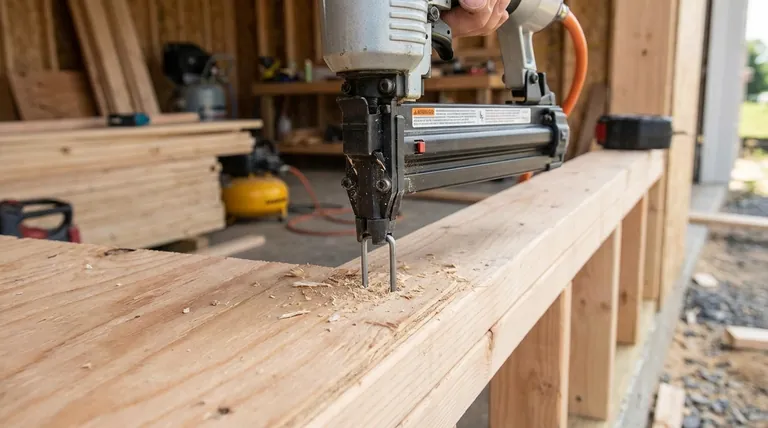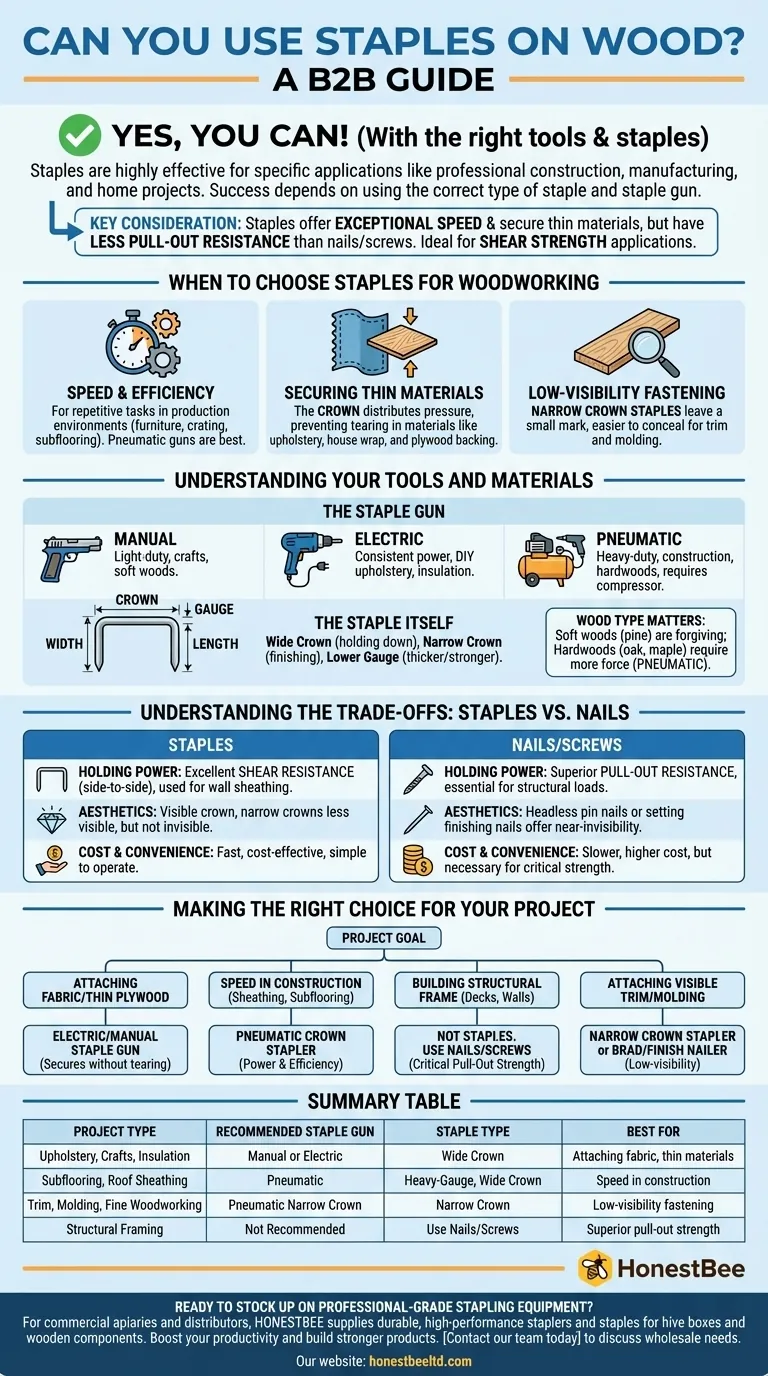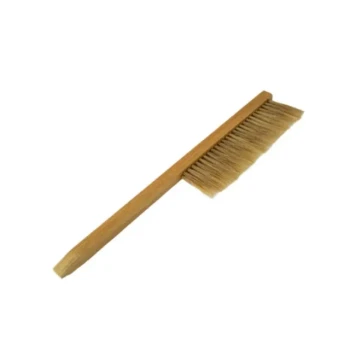Yes, you can absolutely use staples on wood. In fact, it is a common and highly effective fastening method in numerous applications, ranging from professional construction and manufacturing to simple home projects. The key is understanding that staples are a specialized tool; their success depends entirely on using the right type of staple and the correct staple gun for the specific task and wood involved.
While staples provide exceptional speed and are excellent for attaching thin materials to wood frames, they generally offer less pull-out resistance than nails or screws. This makes them ideal for tasks where shear strength is important and structural load is minimal.

When to Choose Staples for Woodworking
Staples are not a universal replacement for nails or screws, but they outperform other fasteners in specific scenarios. Their unique two-legged shape provides distinct advantages.
For Speed and Efficiency
For repetitive tasks, nothing beats the speed of a staple gun, especially a pneumatic one. This makes staples the go-to choice in production environments like furniture making, crating, and installing subflooring.
For Securing Thin Materials
The "crown," or the bridge connecting the two legs of the staple, distributes pressure over a wider area than a nail head. This is invaluable when attaching thin materials like plywood backing, fabric for upholstery, or house wrap, as it significantly reduces the risk of the fastener tearing through the material.
For Low-Visibility Fastening
When attaching trim or molding, narrow crown staples are an excellent choice. They sink into the wood and leave a very small, linear mark that is often easier to fill and conceal than the round hole left by a finishing nail.
Understanding Your Tools and Materials
The term "staple" covers a wide range of fasteners. Matching the staple and the tool to the wood is critical for a secure hold.
The Staple Gun: Manual, Electric, or Pneumatic
A manual staple gun is best for light-duty tasks like crafts or attaching fabric to soft woods. Electric models offer more consistent power without the need for a compressor, making them great for DIY upholstery or installing insulation. For construction and hardwood applications, a pneumatic staple gun, powered by an air compressor, is essential for the force required to drive heavy-gauge staples consistently.
The Staple Itself: Crown, Gauge, and Length
Staples are defined by three key measurements. The crown is the width of the top, the gauge is the thickness of the wire, and the length refers to the legs. Wider crowns are for holding down materials, while narrow crowns are for finishing. A lower gauge number means a thicker, stronger staple for heavier jobs.
Wood Type Matters
Soft woods like pine are very forgiving and accept most staples easily. Hardwoods like oak or maple require significantly more force. Attempting to use a manual or underpowered electric stapler on hardwood will likely result in staples bending or failing to sink completely.
Understanding the Trade-offs: Staples vs. Nails
Choosing a fastener means weighing its strengths and weaknesses against the demands of the project.
Holding Power
This is the most critical distinction. The two legs of a staple provide excellent resistance to shear forces (side-to-side stress), which is why they are used for wall sheathing. However, nails and especially screws offer far superior pull-out resistance. A single staple can be pried out of wood more easily than a ring-shank nail or a screw.
Aesthetics and Application
The visible crown of a staple can be undesirable in fine woodworking projects. While narrow crown staples are easily hidden, they cannot match the near-invisibility of a headless pin nail or a carefully set finishing nail.
Cost and Convenience
For applicable jobs, stapling is often the fastest and most cost-effective method. The tool is simple to operate, and the staples themselves are inexpensive, allowing you to complete large projects quickly.
Making the Right Choice for Your Project
Use this guidance to select the right approach for your goal.
- If your primary focus is attaching fabric, canvas, or thin plywood: An electric or manual staple gun is a perfect choice for its ability to secure the material without tearing it.
- If your primary focus is speed in construction (like roof sheathing or subflooring): A pneumatic crown stapler is the industry-standard tool for its power and unmatched efficiency.
- If your primary focus is building a structural frame (like a deck or wall): Staples are not appropriate; you must use nails or structural screws for their critical pull-out strength.
- If your primary focus is attaching visible trim or molding: A narrow crown stapler is an excellent option, but a brad or finish nailer is a more common choice for fine woodworking.
Ultimately, staples are a highly valuable fastener in any woodworker's arsenal when applied in the correct context.
Summary Table:
| Project Type | Recommended Staple Gun | Staple Type | Best For |
|---|---|---|---|
| Upholstery, Crafts, Insulation | Manual or Electric | Wide Crown | Attaching fabric, thin materials without tearing |
| Subflooring, Roof Sheathing | Pneumatic | Heavy-Gauge, Wide Crown | Speed and efficiency in construction |
| Trim, Molding, Fine Woodworking | Pneumatic Narrow Crown | Narrow Crown | Low-visibility fastening, easy to conceal |
| Structural Framing (Decks, Walls) | Not Recommended | Use Nails/Screws | Superior pull-out strength for structural integrity |
Ready to Stock Up on Professional-Grade Stapling Equipment?
For commercial apiaries and beekeeping equipment distributors, HONESTBEE supplies the durable, high-performance staplers and staples you need to build and maintain hive boxes, frames, and other wooden components with speed and precision. Our wholesale-focused operations ensure you get the right tools for efficient, large-scale production.
Boost your productivity and build stronger products. Contact our team today to discuss your equipment needs and wholesale pricing.
Visual Guide

Related Products
- Pneumatic Paste Filling Machine Bottling Packaging Machine Single Nozzle
- Classic Wooden Bee Brush with Double-Row Boar Bristles
People Also Ask
- What types of products can semi-automatic filling machines handle? Boost Your Production Versatility
- How does a VFFS liquid packaging machine handle honey packaging? Master Viscous Liquid Filling
- What is the function of the forming tube in a honey stick machine? It's the Heart of Your Packaging Line
- What features make jar or bottle packing machines suitable for honey packaging? Optimize for Viscosity and Purity
- What are the initial steps to consider when starting a honey processing plant? Build a Resilient Foundation

